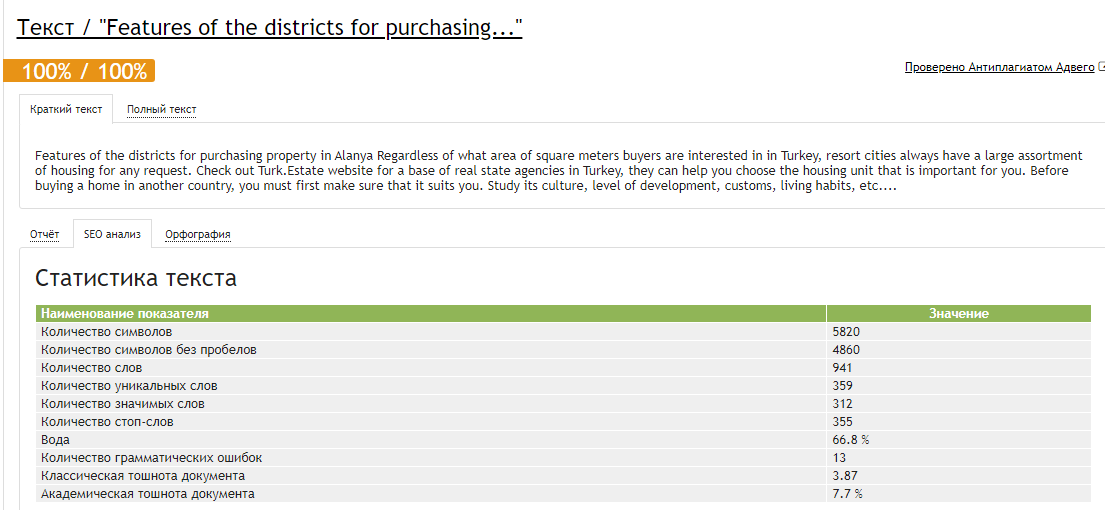Regardless of what area of square meters buyers are interested in in Turkey, resort cities always have a large assortment of housing for any request. Check out Turk.Estate website for a base of real estate agencies in Turkey, they can help you choose the housing unit that is important for you.
Before buying a home in another country, you must first make sure that it suits you. Study its culture, level of development, customs, living habits, etc. Each buyer determines the pros and cons of a particular offer individually, because what is good for one person may not be suitable for another at all. Therefore, the choice of a country where a person buys real estate and the property itself is a purely personal matter.
Invest in an apartment in Alanya
Alanya is a beautiful Turkish region on the Mediterranean coast. It combines all the advantages of Turkey – an excellent climate, warm sea, bright sun. In addition, the city is distinguished by a high level of infrastructure development. Lots of recreational attractions has has been built and developed here every year. But at the same time, you can live here comfortably all the time, because it is a modern city with hospitals, shops, large shopping centers, schools and much more.
In favor of buying an apartment in Alanya speaks the local climate and amenities, charming nature and proximity to the beaches. But besides this, you should also pay attention to the rich selection of real estate located in populated areas. There are plenty of offers of the ready-made complexes and projects under construction located near the sea. All the residential complexes have modern equipment and landscaped areas with swimming pools, barbecue areas, walking areas, etc. There are apartments in different price categories. At a price of EUR 50,000, you can purchase a high liquid property with excellent characteristics and location. All this, of course, speaks in favor of buying property in this beautiful city.
Buying a property is not only a great opportunity, but also a certain responsibility. If you are buying a holiday apartment, then your ownership will be mostly remote. Even in months of absence, you will still need to pay bills for the upkeep of the facility. A year of the maintenance of an apartment worth EUR 50,000, you will have to pay from EUR 300. This cost includes:
- taxes,
- service fees for the complex maintenance,
- cleaning of the territory, etc.
So that your property does not stand idle during most of the year, it is wise to rent it out. The income received from the lease will cover the costs of maintaining the property and make a profit. So you can use your Turkish property to the maximum.
What is special about housing units in Alanya
The Turkish resort town of Alanya is located 135 kilometers or two hours from the famous Antalya. Alania has several administrative districts that were previously considered separate satellite villages: Oba, Tosmur, Konakli, Cikcilli, Mahmutlar, Kestel, Avsallar, and others.
Over the past 10-15 years, the situation in Alanya has changed significantly and from a small town, it has turned into a luxury resort on the Mediterranean Sea, where life does not stop even in the off-season. In addition to the development of urban infrastructure, local developers began to actively develop territories and build diverse properties: villas and villa complexes, modern residential areas with their own infrastructure, and apartment buildings. Every year the quality of construction is increasing, offering foreign investors the opportunity to buy real estate in Alanya at a completely democratic cost.
Let’s talk about the availability of choice on the example of one or another district of Alanya since the choice of the resort area will depend on which houses you, as a buyer, prefer.
Districts in Alanya
In Alanya, there are areas where only low-rise houses and cottages are built, and there are also residential areas with multi-level ultra-modern residential complexes.
- For example, in the central Alanya district of Demirtash, where many historical and cultural attractions are concentrated, the construction of buildings no higher than 5 floors is allowed. This gives the city quarters its style and intimacy. A similar situation exists in Kestel, where it is also allowed to build houses no higher than 5 levels.
- Oba is home to many European families. On the real estate market, there are apartments located in cozy residential complexes with their own infrastructure, about 5 floors high.
- Kargicak is famous for its villas and low-rise buildings of 4-5 floors. The villas are being built with a height of 2-3 floors on a hill, which opens up delightful panoramas of the sea and mountains.
- In Cikcilli, on the other hand, lovers of the modern lifestyle will appreciate the abundance of proposals for apartments located in 8-12 story buildings. The disadvantage of this area of Alanya is the lack of access to the sea, which can be solved simply – by car or public transport, you can quickly get to other city beaches.
- The popular Mahmutlar area will delight all applicants looking to live in modern residential complexes. The construction of multi-story buildings is allowed here. The maximum number of stories of buildings found on the Mahmutlar real estate market is 12 floors. Buyers can choose from economy class apartments, as well as luxury apartments in modern apartment buildings.
Property in Alanya
If you want to buy an apartment in Alanya and learn more about the specifics of the residential buildings in resort areas, contact the Turk.Estate. They provide high-quality professional services for the search and purchase of housing and are ready to help their clients at every stage of cooperation.


Nice article, thanks for information